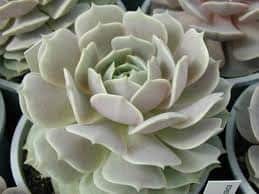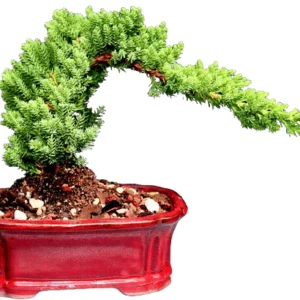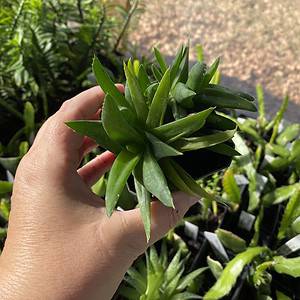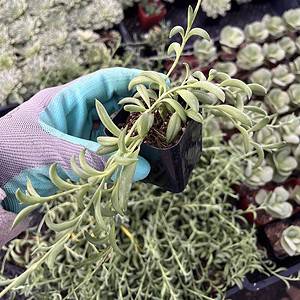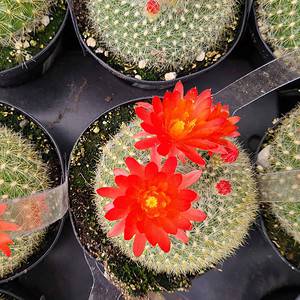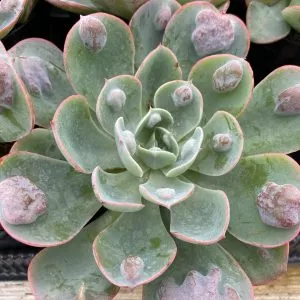No products in the cart.
Table of Contents
The Ixora plant is a beautiful flowering shrub that comes in many different colors. It produces a fantastic display of flowers for any garden. The plant can grow up to 2 meters high and has small leaves with serrated edges. This species is the national flower of Sri Lanka!
You will find Ixora plants in both tropical and subtropical climates worldwide. However, they do the best when grown in wetter environments like rainforests or near waterfalls with plenty of humidity.
These flowering plants bloom all year in tropical places and come in various colors, including white, pink, yellow, red, and orange flowers. And did you know that the Ixora plant comes in over 500 species and variations? Well, they even have some species being utilized in traditional medicine and others having invasive roots!
There are many reasons why you should consider planting the Ixora plant. It’s effortless to care for. It thrives even with neglectful caretakers, and its bright colors will surely add a splash of color to any garden!
Ready to have this outdoor plant in your backyard? Consider yourself lucky because, in this article, we’ll teach you how to tend to Ixora plants.
Ixora Plant Plant Care Basics
Following is the summary of the Ixora plant care guide:
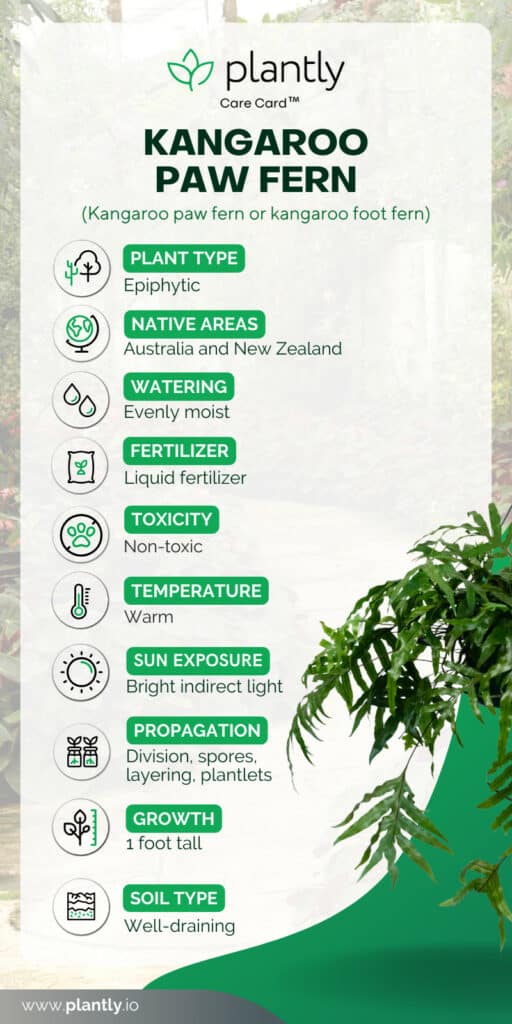
Best Potting Mix
The Ixora plants like soil that is rich in organic matter. So, you may add a layer of compost to your plant’s soil whether planted in the garden or in a pot. They are also acid-loving plants. Ideally, they prefer a slightly acidic soil pH level, ranging from 5.5 to 6.5.
Plants grown in soil combinations with a pH higher than 7.0 can have dull foliage color.
Important note: You can make the perfect potting mix with 60 percent loamy soil, 20% cocopeat, and 10% sand.
Ideal Lighting
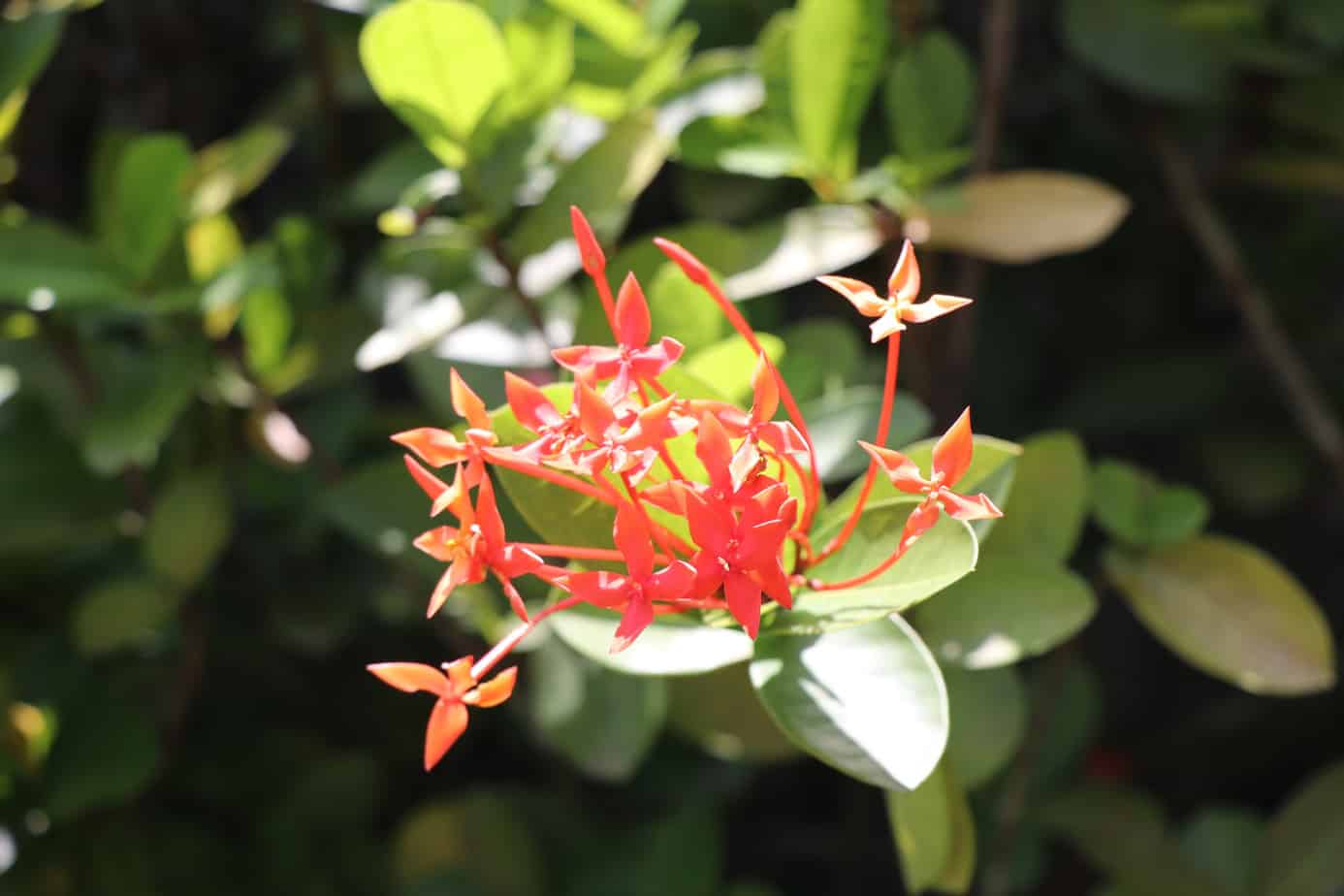
Ixora plants are tropical flowers, so they love the heat of summer. Ideally, about 5 to 8 hours of bright, direct sunlight per day. However, it prefers partial shade in the hottest regions in its USDA zone.
Watering Needs
Water the plant Ixora once a week with a deep soaking, and keep the soil moist but not dripping wet. A good rule of thumb is to never let the soil dry out. However, you can reduce your watering frequency in the winter.
Remember that your plants may be harmed if you overwater them! To avoid overwatering your Ixora plant, allow the soil to dry out before the next watering schedule. Be sure to drench the soil and then let the excess water drain completely. Check the moisture level of the soil before watering again.
-
$7.99 – $9.99Sold By: Succulent Oasis
In stock
Echeveria ‘Lola’ Succulent | Beautiful Rosette in Shades of Pale Green and Lavender
Rated 4.84 out of 5 based on 352 customer ratings05Sold By: Succulent Oasis -
Free Shipping$58.07Sold By: BONSAI WORLD LLC
Only 1 left in stock
Juniper Bonsai Tree medium
Sold By: BONSAI WORLD LLC -
$18.00Sold By: Wonka Plants
$26.00In stock
Alocasia Hilo Beauty
Only 3 available and it’s in 6 people’s basketRated 4.94 out of 5 based on 108 customer ratings25Sold By: Wonka Plants -
$8.00Sold By: Smoot's Farm
In stock
Bergeranthus Multiceps Succulent
Rated 4.89 out of 5 based on 27 customer ratings00Sold By: Smoot's Farm
Temperature & Humidity
The temperature needs for the thriving Ixora plant are essential. They will grow best if the temperature is between 60 and 80oF (15.5 and 26.6oC). If you live in an area where the temperature dips below freezing, you may need to move your plants indoors during the winter months.
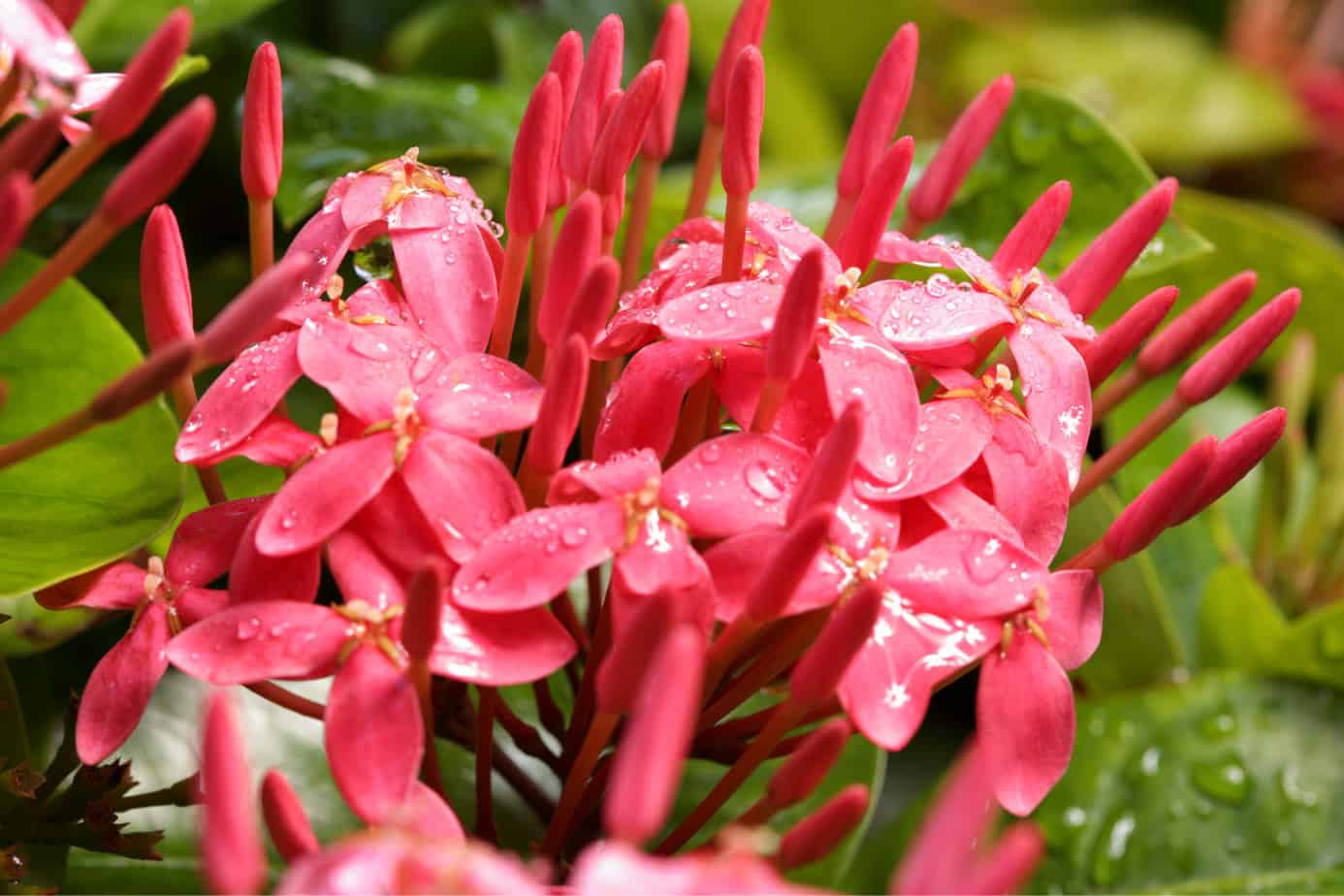
Ixora plants love humid environments. If potted, place your plant in a humid part of your house, such as the kitchen or the bathroom. You can also spritz the plant with water daily to enhance humidity.
Or you can buy a small space humidifier to keep near your Ixora plant and any other tropical plants you have.
Fertilizer
A well-balanced liquid fertilizer applied once a month during the growing season is usually sufficient. You can also use a slow-release organic fertilizer pellet sprinkled around the base of the plants in spring and again in late summer.
Remember that proper nourishment will increase the chances of your plant producing flowers.
Propagation
Who said to buy another Ixora plant to increase your collection? Well, don’t! We suggest that you propagate them instead! Ixora plants can be propagated easily through stem cuttings.
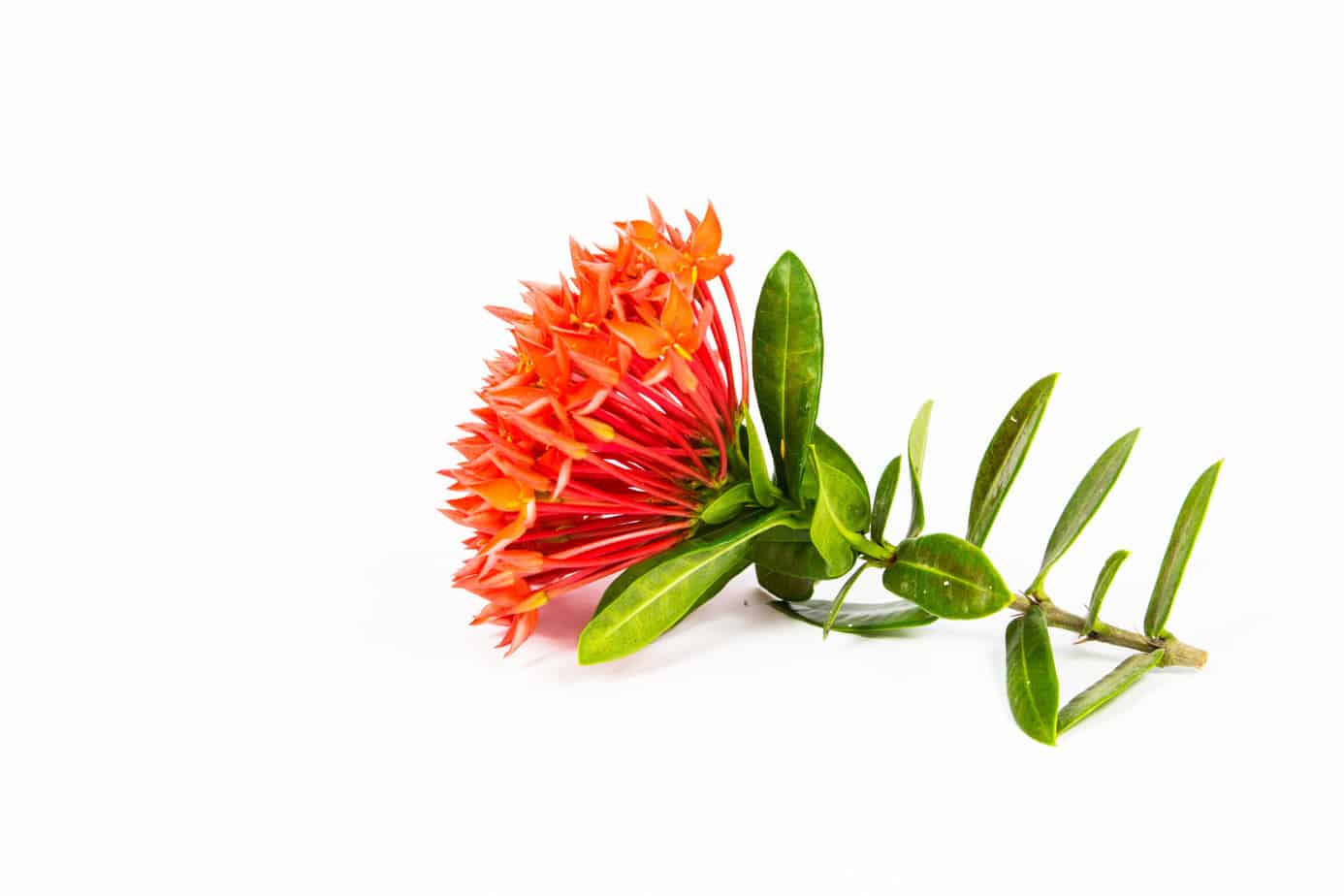
And here’s how you will do it:
- Take a cutting from the tip of a healthy branch and remove the leaves from the lower half of the cutting.
- Dip the end of the cutting in rooting hormone powder and place it in moistened potting mix.
- Keep the soil mix moist until new roots develop.
- Once the roots have grown, you can transplant the new Ixora plant into a pot of its own.
Growth Zone
You can grow Ixora plants in U.S. Department of Agriculture zones nine through eleven. This means that they can be planted in warmer climates only.
-
$7.99 – $9.99Sold By: Succulent Oasis
In stock
Echeveria ‘Lola’ Succulent | Beautiful Rosette in Shades of Pale Green and Lavender
Rated 4.84 out of 5 based on 352 customer ratings05Sold By: Succulent Oasis -
Free Shipping$58.07Sold By: BONSAI WORLD LLC
Only 1 left in stock
Juniper Bonsai Tree medium
Sold By: BONSAI WORLD LLC -
$18.00Sold By: Wonka Plants
$26.00In stock
Alocasia Hilo Beauty
Only 3 available and it’s in 6 people’s basketRated 4.94 out of 5 based on 108 customer ratings25Sold By: Wonka Plants -
$8.00Sold By: Smoot's Farm
In stock
Bergeranthus Multiceps Succulent
Rated 4.89 out of 5 based on 27 customer ratings00Sold By: Smoot's Farm
Potting and Pruning
It is recommended that you grow the Ixora plant directly in the soil for the most outstanding results. However, you can also grow them in containers if you have limited space. When growing Ixora, I prefer to use a 12-inch clay container. Make sure there are at least 2 to 4 drainage holes in the bottom of the clay pot.
Pruning can be used to manage the size of the plant. All fallen leaves should be removed and disposed of, and all dead or infected branches should be pruned.
Ixora Plant Varieties and Similar Plants
Ixora plants are among the most popular flowers in tropical climates like Florida, Hawaii, and South America. Ixora can grow up to six feet tall, but some species only grow up to three feet high. And there are even Dwarf Ixora species! Following are some of the choices you may have:
Ixora Maui Red
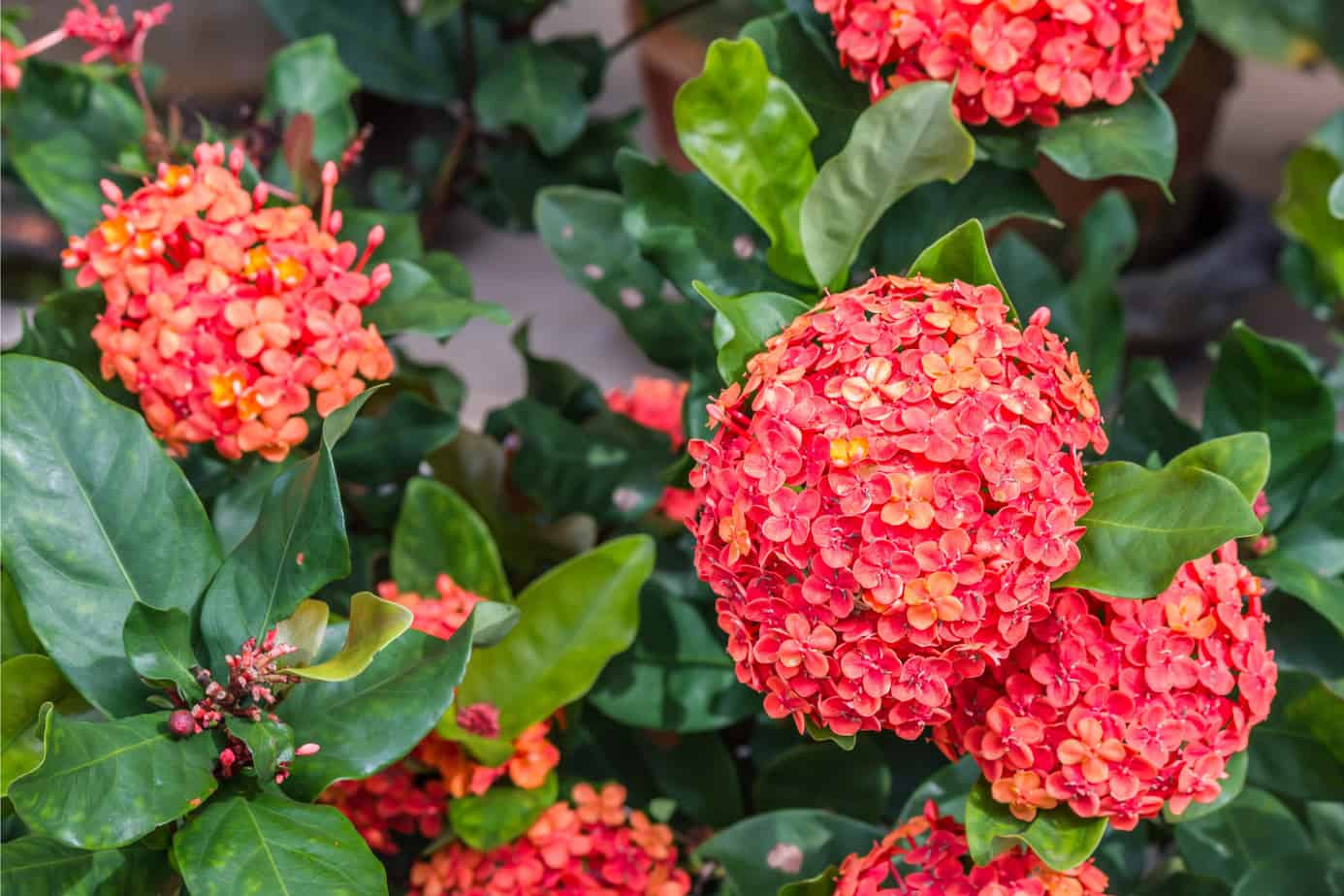
Ixora Maui Red is a shrubby and sprawling variety among the Ixora plants. It is compact and branched making it a good candidate for hedges, borders, and even potted plants. The color of the flowers is bright orange.
Ixora Dwarf red
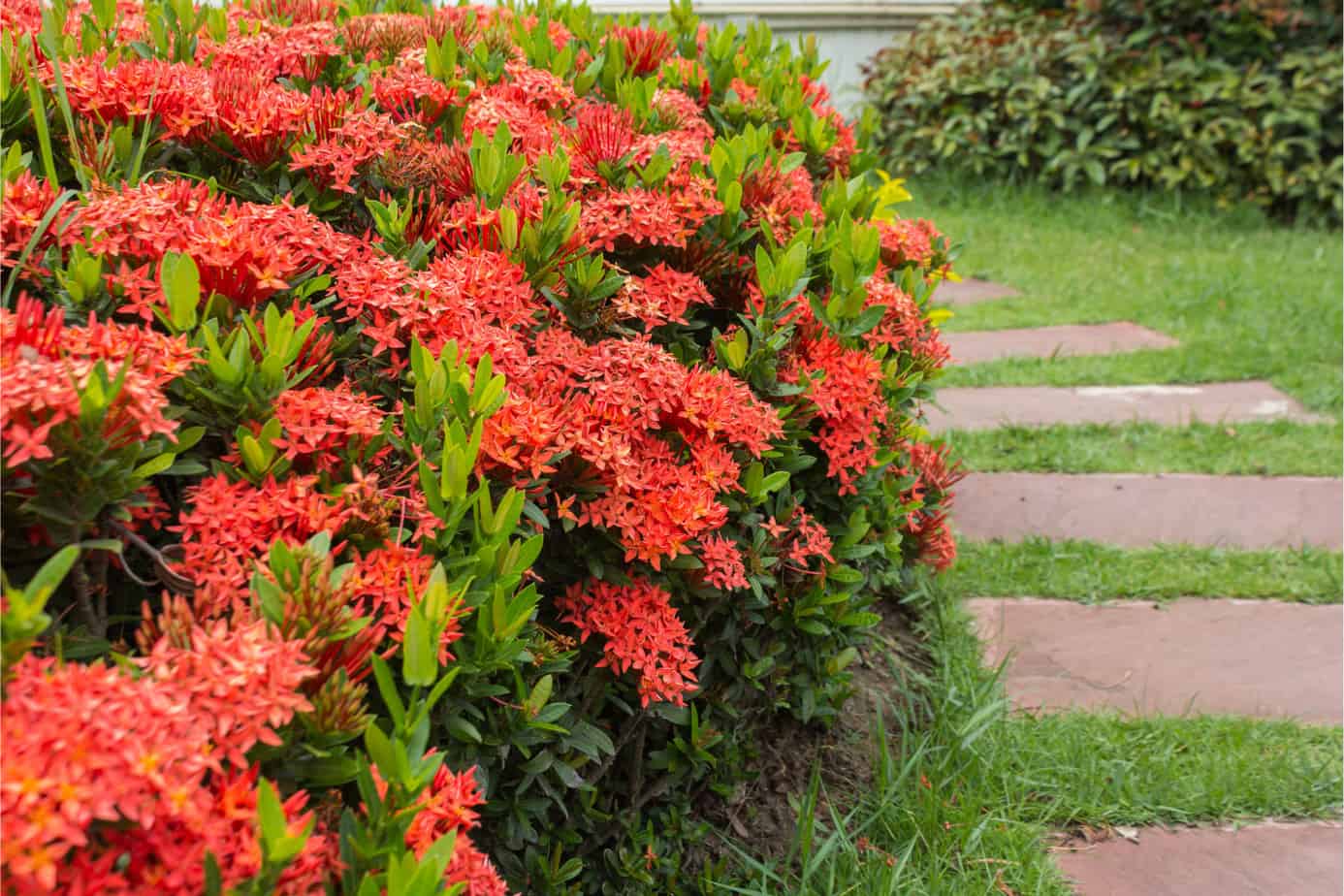
Dwarf Ixora plants, like the Maui Red, are also compact in size. The main difference though is that in Dwarf Red, the Ixora plant leaves are smaller in size. Dwarf Ixora plants are also good candidates for hedges and borders.
Ixora chinensis

Is also known as Chinese ixora. It’s a tropical evergreen shrub that produces crowns of flowers in red-orange color. It can grow up to 2 meters high. In China, this plant is cultivated not only for ornamental purposes for but medicine as well.
-
$4.75Sold By: Cacti and Exotica
In stock
2″ String of Bananas
Only 10 available and it’s in 3 people’s basketRated 4.98 out of 5 based on 59 customer ratings00Sold By: Cacti and Exotica -
$16.00Sold By: Beauties & Beasts
In stock
Cactus – Echinopsis chamaecereus (clumping)
Rated 4.83 out of 5 based on 24 customer ratings00Sold By: Beauties & Beasts -
$14.99Sold By: BubbleBlooms
In stock
Philodendron Silver Sword, 4 inch pot, Philo selloum, erythrinum, hastatum Spathiphyllum
Only 98 available and it’s in 1 people’s basketRated 4.81 out of 5 based on 279 customer ratings01Sold By: BubbleBlooms -
$8.99 – $12.99Sold By: Succulent Oasis
In stock
Scarlet Crown or Notocactus Haselbergii | A lovely cactus that produces amazing blooms
Rated 4.84 out of 5 based on 352 customer ratings16Sold By: Succulent Oasis
Ixora Plant Diseases & Pests
Insects and pests can be a huge problem for your plant Ixora. Aphids, mealybugs, and scale are just some of the common pests that you need to look out for. Inspecting regularly is essential to spot early signs of infestation. If you see signs of damage, make sure to get rid of the pests immediately. Otherwise, it can spread out and cause more harm.
Ixora Plant diseases are a little challenging to identify because you might not even notice them at first. Only when your plant starts showing symptoms like yellowing leaves and wilting petals will you be able to identify?
It’s best to look out for diseases when the plant is still young. Prevention is always better than cure. Make sure to give reasonable care to keep your Ixora plant happy.
Frequently Asked Questions
Ixora plants are considered fast growers in an ideal location. They can grow up to a foot in height and spread rapidly. If you’re looking for a quick-growing plant, Ixora is a good option. However, they also need plenty of space to grow, so make sure you have enough room for them before you bring one home
One of the most common questions about Ixora is how to make it grow faster. Unfortunately, there’s no one-size-fits-all answer, as the rate at which an Ixora grows depends on various factors, such as light exposure, soil moisture, and fertilization.
The Ixora plants can grow up to be three feet tall, but they will typically only reach about two feet in height. It’s a good idea to keep this in mind when choosing where to plant your Ixora plants, as you’ll want to make sure there is enough room for them to grow. If you’re not sure how large your Ixora plants will get, it’s best to give them a large pot, so they have room to grow.
Lucky for you, you are in the right location! Yes, you can purchase your Ixora plants here at Plantly! We offer faster transitions online and will deliver the plants without blemish. Message us now to get you started!
Whether you want to buy, sell or simply reach out to other plant enthusiasts, Plantly is the right place to be!
-
$8.99Sold By: Succulent Oasis
In stock
Cactus Plant -Small Grafted ‘Moon Cactus’ Bright Orange. Adds color to your terrarium or garden.
Rated 4.84 out of 5 based on 352 customer ratings00Sold By: Succulent Oasis -
Free Shipping$44.99Sold By: Aloha Hawaii Orchids
In stock
Live Paphiopedilum Niveum x Sib (hshyng x tan san) Rare Plant 4″
Rated 4.65 out of 5 based on 268 customer ratings00Sold By: Aloha Hawaii Orchids -
$12.00Sold By: Smoot's Farm
In stock
Dracaena angolensis aka Sansevieria cylindrica Snake Plant 3″ Pot Live Plant
Rated 4.89 out of 5 based on 27 customer ratings00Sold By: Smoot's Farm -
$25.99Sold By: Succulent Oasis
In stock
Medium Succulent Plant – Echeveria ‘Raindrops’. Very Limited Hybrid.
Rated 4.84 out of 5 based on 352 customer ratings02Sold By: Succulent Oasis
